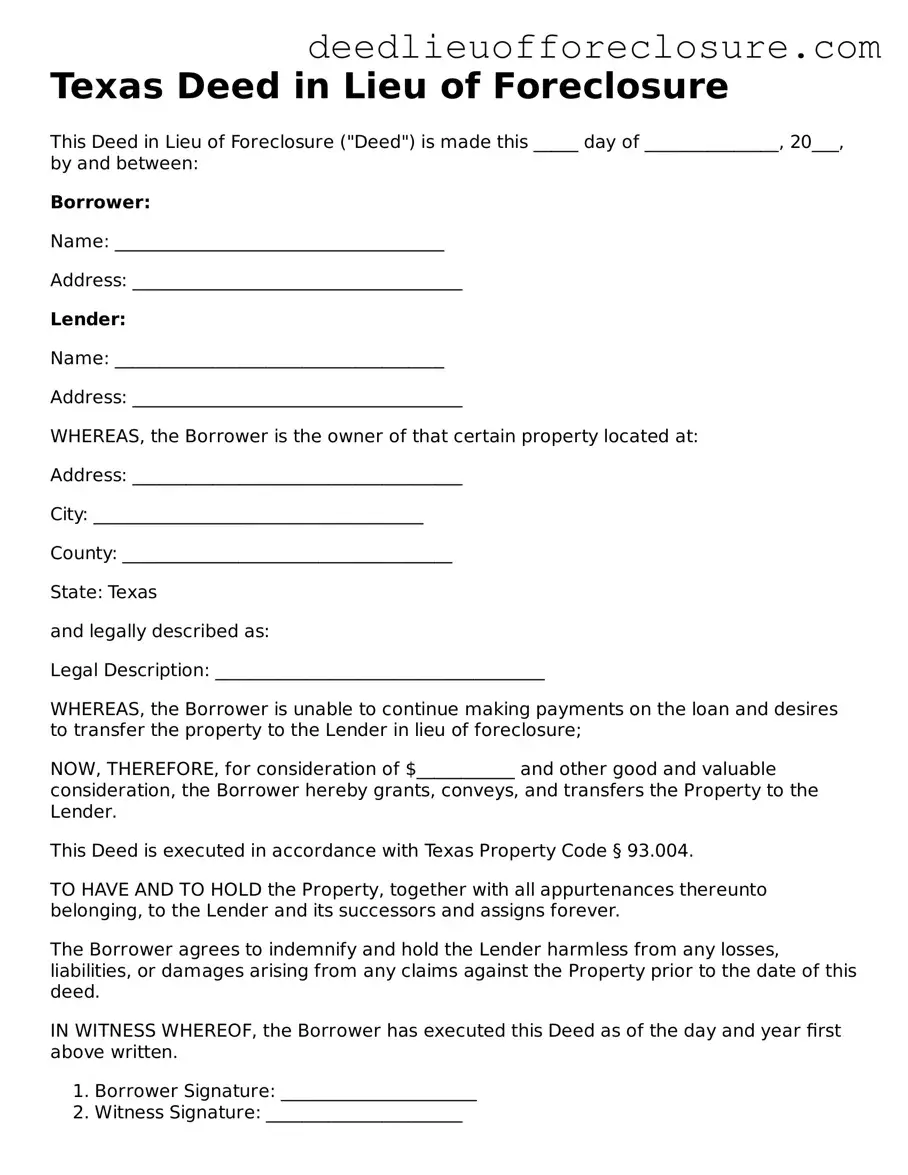Texas Deed in Lieu of Foreclosure
This Deed in Lieu of Foreclosure ("Deed") is made this _____ day of _______________, 20___, by and between:
Borrower:
Name: _____________________________________
Address: _____________________________________
Lender:
Name: _____________________________________
Address: _____________________________________
WHEREAS, the Borrower is the owner of that certain property located at:
Address: _____________________________________
City: _____________________________________
County: _____________________________________
State: Texas
and legally described as:
Legal Description: _____________________________________
WHEREAS, the Borrower is unable to continue making payments on the loan and desires to transfer the property to the Lender in lieu of foreclosure;
NOW, THEREFORE, for consideration of $___________ and other good and valuable consideration, the Borrower hereby grants, conveys, and transfers the Property to the Lender.
This Deed is executed in accordance with Texas Property Code § 93.004.
TO HAVE AND TO HOLD the Property, together with all appurtenances thereunto belonging, to the Lender and its successors and assigns forever.
The Borrower agrees to indemnify and hold the Lender harmless from any losses, liabilities, or damages arising from any claims against the Property prior to the date of this deed.
IN WITNESS WHEREOF, the Borrower has executed this Deed as of the day and year first above written.
- Borrower Signature: ______________________
- Witness Signature: ______________________
- Date: ______________________
STATE OF TEXAS
COUNTY OF ____________________
Before me, the undersigned authority, on this _____ day of _______________, 20___, personally appeared the above-named Borrower, who is known to me or proved to me through identification to be the person whose name is subscribed to this instrument and acknowledged to me that they executed the same for the purposes and consideration therein expressed.
Given under my hand and seal of office, this _____ day of _______________, 20___.
Notary Public Signature: ______________________
My Commission Expires: ______________________
